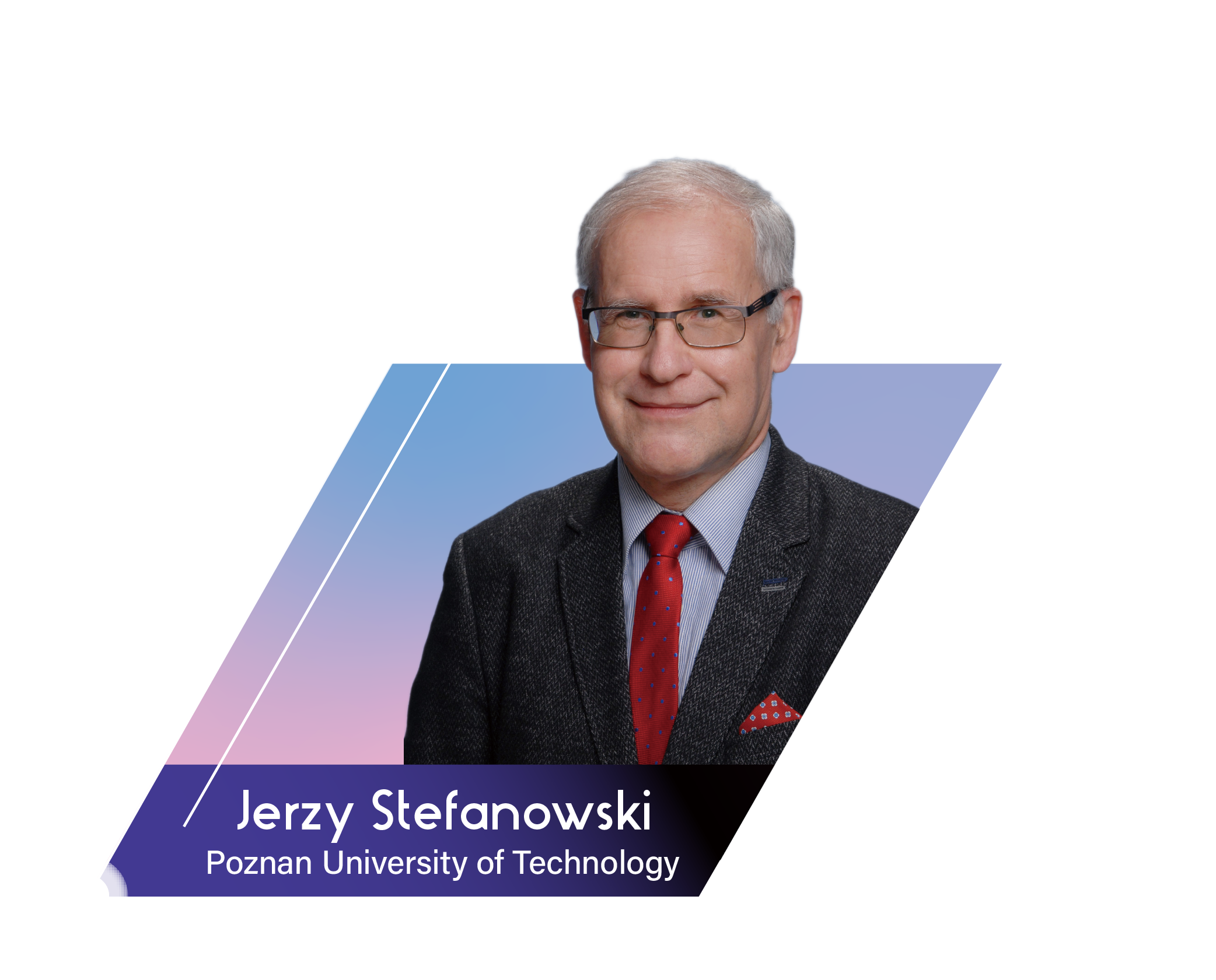
Hsiang-Tsung Kung
Harvard University
Day 1 13:10~14:00 Keynote 1
Model Pretraining and Aligned Representation Everywhere
Abstract:
Today, we are witnessing a growing number of applications that
are starting to leverage the capabilities of model pretraining
and aligned representation techniques. We showcase examples of
these innovative applications across various fields, including
manufacturing, design, and the domain of continuous local
adaptation and inference on edge devices.
About the speaker:
H. T. Kung is William H. Gates Professor of Computer Science
and Electrical Engineering at Harvard University. For more
information about him, please refer to his biosketch at
http://www.eecs.harvard.edu/htk/biography/.

Jerzy Stefanowski
Poznan University of Technology Institute of Computing Science
Day 1 14:10-15:00 Keynote 2
Rules, Prototypes and Counterfactuals in Explaining Black Box Machine Learning Models
Abstract:
Many modern machine learning systems are perceived as "black-box" systems, which do not provide information on how they work inside, what they learned and how they came to a specific decision. This is an obstacle in many application fields and is one of the premises for growing research interest in explainable artificial intelligence methods. The ability to explain how ML systems work is also one of the main elements of achieving user trust in AI systems and their applications.
In the first part of the talk, we will discuss these aspects in the context of the recent EU recommendations towards Trustworthy AI. Then, out of many methods of explanation, we will pay special attention to three ones, whose symbolic representation is potentially the most readable and natural for the user, i.e. rules, prototypes and counterfactuals.
As many current approaches may provide too many rules (of the form if condition then decision), we will discuss our proposals for selecting them using Bayesian confirmation measures and evaluating the importance of conditions in rule sets. They will be illustrated by examples of exploring medical data.
Moving on to the next topic, prototypes are instances (representative real examples or synthetic ones) defined on the basis of the learning dataset to explain the prediction of the machine learning model. A user can interpret the model’s reasoning by analysing a few prototypes the most similar to the predicted instance. We will show how they can be used in two cases: explaining predictions of random forest ensembles and in the prototype-based neural network for text classification. In particular in this new network we will show how to identify prototypes referring to embedding’s representation - they will be projected to the most important phrases in the input training text data. The experimental evaluation demonstrates that the proposed network obtains similar classification performance to the black-box convolutional networks while providing faithful explanations.
On the other hand, counterfactual explanations are different types of local explanations that provide information about how feature values of an input example should be changed to obtain a desired prediction of the model (change its decision). We will first present our work on a multi-stage ensemble approach (using several different methods for generating diversified explanations for the same instance) that will then select a single counterfactual based on the multiple-criteria analysis. Then, we briefly discuss our new approach to obtain robust explanations in case of the underlying ML black box model changes due to data shift or model slight retaining. Finally, we will outline open problems and challenges for the discussed explanations.
About the speaker:
Jerzy Stefanowski is a full professor at Poznan University of Technology Institute of Computing Science,
and leads the university’s Machine Learning Lab. He is a Member of the Polish Academy of Sciences since 2021,
and the Vice-President of the Polish Artificial Intelligence Society.
His research interests include data mining, machine learning, artificial intelligence and intelligent decision support.
Major results are concerned with: explainable Artificial Intelligence, counterfactual or prototype explanations of machine learning black box models,
induction of various types of rules, multiple classifiers - ensembles, mining class imbalanced data,
incremental learning from evolving data streams and concept drift detection, data preprocessing,
descriptive clustering of documents and medical applications of data mining.
He is the author and co-author of over 230 research papers and 2 books. For more information,
please refer to his personal webpage.

Tzong-Han Tsai
National Central University Department of Computer Science and Information Engineering
Day 2 09:00-10:00 Keynote 3
Pioneering Local AI: TAIDE's Quest for a Trustworthy Taiwanese Language Model
Abstract:
At the TAIDE team in the National Science and Technology Council's Innovation Center, our mission has been unequivocal from the outset: to develop a large language model that caters specifically to Taiwan’s linguistic nuances while upholding the highest standards of data integrity and security. In a world dominated by major tech players, our objective has been to secure a digital voice for Taiwan, ensuring our sovereignty in the digital space and safeguarding sensitive information.
With only a fraction of the budget available to global giants like ChatGPT, our resolve has remained strong. We embarked on this ambitious project to create a model that authentically speaks and writes in the Taiwanese vernacular—reliable and trustworthy. This required assembling a comprehensive Taiwanese corpus, developing dependable evaluation metrics, and navigating the complexities of integrating diverse institutional efforts.
Our path was fraught with challenges, including convincing content producers to share their data while ensuring all used materials complied with strict legal standards to prevent the incorporation of unreliable or biased information. Despite these hurdles, our team's dedication yielded significant accomplishments: we not only launched the widely praised commercial 7B model but also utilized Llama3 to train a new preview model shortly after its release, demonstrating our deep technical capabilities.
This development process not only showcased our technical expertise but also reinforced our commitment to responsibly advancing Taiwan's AI capabilities. As we move forward, our focus remains on nurturing an ecosystem where technology not only supports local industry growth but also embodies and promotes societal values, positioning Taiwan as a formidable player in the global AI landscape.
About the speaker:
Professor Tzong-Han Tsai is a computer scientist specializing in natural language processing, computer vision, deep learning, and digital humanities. He is a Professor at National Central University Department of Computer Science and Information Engineering, and a Research Fellow at the Acedemia Sinia Research Center for Humanities and Social Sciences. He previously served as the Executive Director of the Center for GIS, RCHsSS, Academia Sinica. Additionally, he is the Project Leader of the AI Cup, a national competition on artificial intelligence organized by the Ministry of Education.
Over the years, he has conducted numerous interdisciplinary research projects in biomedical and humanities fields, and has issued publications in various SCI/SSCI journals and top-tier conference papers. He has received awards such as the Outstanding Research Award from National Central University in 2020 and 2021.

